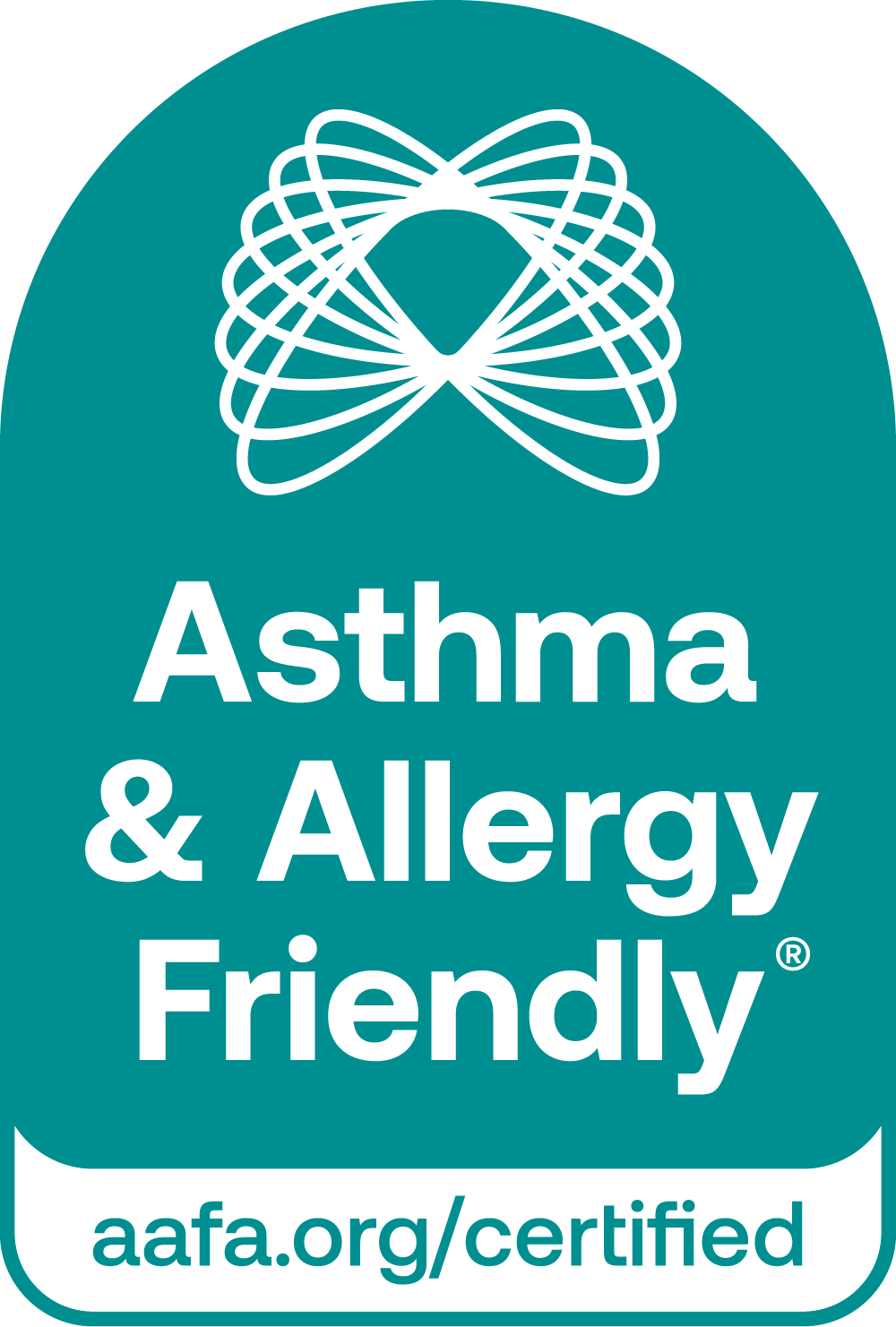National Healthy Homes Month brings into focus the critical importance of healthy indoor environments
As the nation observes National Healthy Homes Month, it’s crucial to acknowledge the profound impact indoor air quality has on our health and the collective responsibility we share in cultivating healthier living environments.
In this blog, we’ll explore the effects of indoor pollutants, ways in which homeowners can improve air quality, and the roles that third party certification, manufacturers, retailers, building professionals, designers, and governing bodies have in promoting healthier built environments.
Indoor air quality and health
Indoor air quality can significantly impact health. Exposure to indoor pollutants can result in a spectrum of health issues ranging from respiratory distress to chronic diseases like cancer and heart ailments. The air we breathe indoors can harbor a cocktail of pollutants—allergens, mold spores, volatile organic compounds (VOCs), and more – with the potential to trigger allergies, exacerbate asthma, and compromise our long-term health. Hence, safeguarding indoor air quality isn’t just a luxury; it’s a fundamental necessity for the wellbeing of society.
How can we improve indoor air quality this National Healthy Homes Month ?
- Homeowners
Empowering homeowners with knowledge and resources is crucial in this effort. Simple yet effective measures such as regular cleaning, adequate ventilation, and humidity control can significantly enhance indoor air quality. Third-party certification of household products ensures reliability and transparency for consumers enabling homeowners to distinguish between genuine claims and “well-washing” tactics. Unregulated terms like “hypoallergenic” should be queried as these can be applied to any product, whether it has undergone testing or not. It’s not merely about beautifying homes but about nurturing spaces that promote holistic well-being.
- Manufacturers and Retailers
Manufacturers and retailers play vital roles in promoting healthier indoor environments. By prioritizing materials with minimal potentially harmful chemical emissions and providing consumers with comprehensive information they can wield immense influence in shaping the built environment. Third-party certification help consumers make informed choices. Our Asthma & Allergy Friendly® Certification Program, a program run in collaboration with the Asthma and Allergy Foundation of America, certifies building materials (paint, flooring, insulation), appliances (air cleaners, vacuum cleaners, dehumidifiers), laundry-related products (washing machines, detergents), cleaning products (surface cleaners, dusting wipes), and more.
Recently, the program showcased its efforts at the AAAAI 2024 Annual Meeting by unveiling a “healthy home booth” , displaying donated Certified items, highlighting their impact on indoor air quality. At this event, Tarkett, Downlite, Rabbit Air, True Value, 3M Filtrete, Granite Gold, Renegade Brands, Wicked Sheets, and Knauf Insulation donated their Asthma & Allergy Friendly® Certified items to be displayed, emphasizing the tangible impact of certified products in real-life settings. This type of initiative not only amplifies the visibility of certified products but also cultivates a community of support and advocacy for respiratory health. Through collaborative efforts like these, we move closer to realizing healthier homes for all while fostering corporate responsibility and sustainability.
- Designers, architects, and building professionals
The choices of designers, architects, and building professionals can carry profound implications for indoor air quality. Integrating proper ventilation mechanisms, as per ASHRAE 241, and selecting low-emission materials underscore a commitment to creating spaces that prioritize health without compromising aesthetics or functionality. Consumers are becoming more educated about the health impact of their indoor environment and are demanding a healthier build, so it is crucial that building professionals can meet this demand through knowledge of building materials that have a healthier impact on indoor air. Certification programs such as LEED, a widely used green building rating system run by the U.S. Green Building Council (USGBC), provide a framework for healthy and efficient buildings. Educational programs and courses are widely available for those in the building and design industry to facilitate further education in this area.
Health Equity
We must not overlook the glaring disparities in access to healthy living spaces. Low-income communities bear the brunt of inadequate housing conditions, impacted by a disproportionate burden of indoor pollutants. Addressing health equity necessitates concerted action from governing bodies, educators, and community leaders. By championing initiatives that promote affordable healthier housing and providing access to resources and education, we can bridge the gap and ensure that health knows no socio-economic boundaries.
National Healthy Homes Awareness Month serves as a timely reminder of our interconnectedness with our indoor surroundings and highlights the importance of fostering environments that nurture our health. Collaboration among stakeholders is essential to ensure our indoor environment supports our health and by forging alliances across sectors we can look forward to a healthier future for all.

